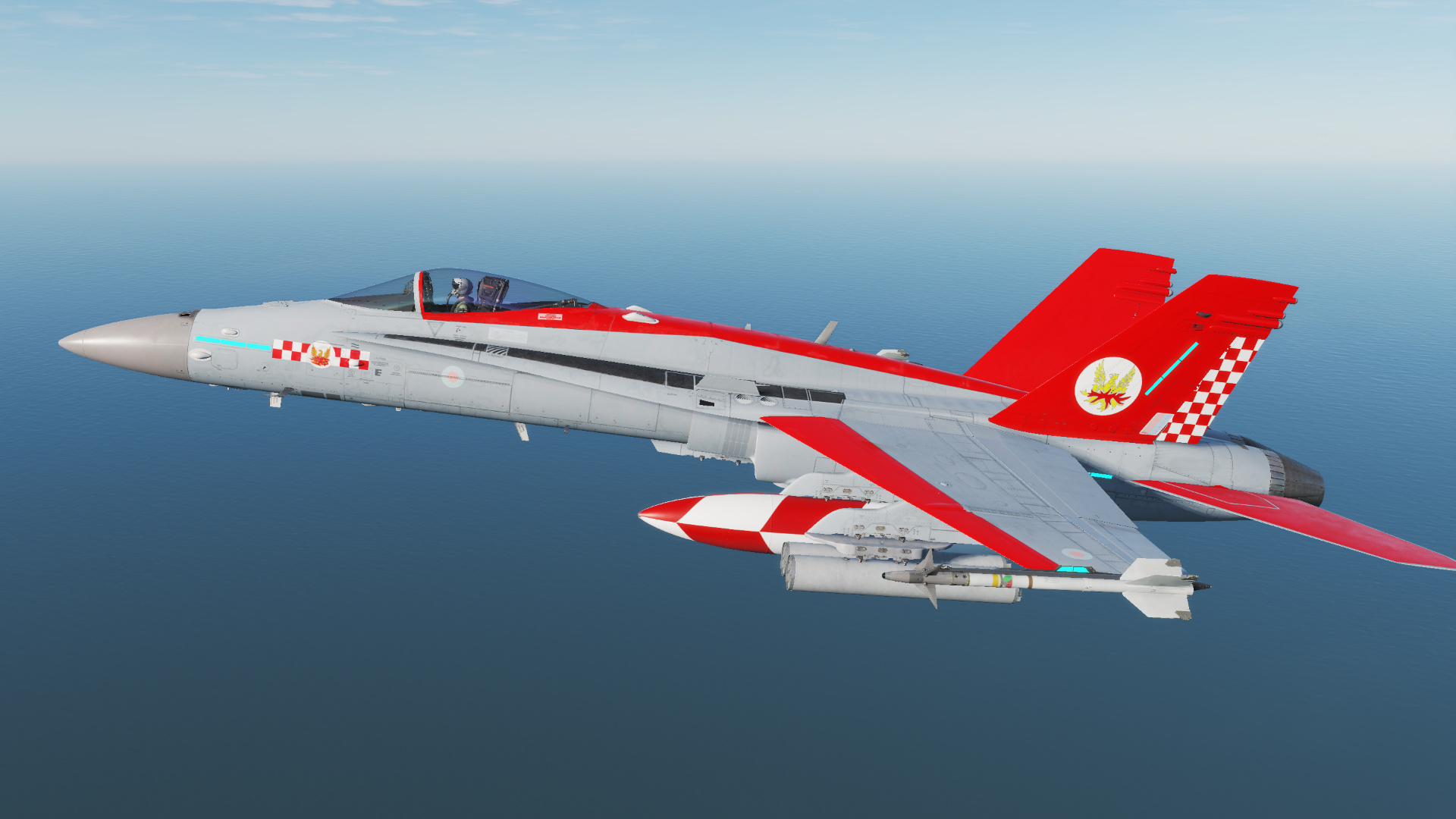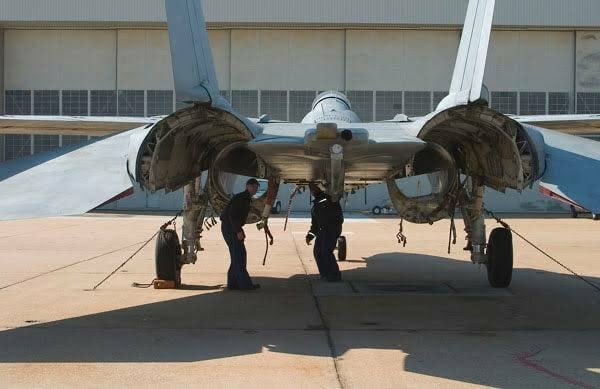- Joined
- 6 September 2006
- Messages
- 4,834
- Reaction score
- 9,460
Stock Hornet or Anglo-Hornet or No Hornet?
As I said in the Mirage 3000 thread a while back:
F-18L was possibly the best option for a new buy (at that time the F/A-18 was still two seperate versions and hadn't flown at that time I think). I think the MoD/RAE did see what the RB.199 would bring to the Hornet, I'll have to dig out the file again, but I don't think it offered any particular advantages in solving the STOL requirements.
So the Hornet was judged the best of the starting points from existing Western fighters in that class. So the options were - buy it and possibly doom European aviation to irrelevance and hope they could maintain enough expertise to design a fighter in the 90s for the 2000s or go all out and leapfrog Hornet in terms of performance, agility, high AoA combat capability, sensors and avionics.
Today you could argue Typhoon/Rafale are better than the F/A-18A but the revamped Super Hornet probably is on par. Had EFA/ACX materialised as Typhoon/Rafale 5-10 years sooner the leap might have been more obvious.
Politically though there was serious implications from buying/building Hornets. Doubtless Germany could have gotten away with it having no serious indigenous capability to design their own fighters. For the UK it was unthinkable and jobs like ADV and Sea Harrier FRS.2 (to become FA.2) were cut 'n' shut tinkering jobs and all the heavy lifting on Harrier II was being done by McD. Hawk 200 looked cute but was like building tonka toys and siphoning what little remained from Warton's lightweight ECA into SAAB's Gripen didn't bring great dividends.
Without keeping at least RB.199 development going there is no hope of RR managing to keep expertise to develop a new engine for a putative 2000s fighter.
So yes, there would be temptations to fit more local avionics than required, maybe to tinker with fitting RB.199s at the risk of associated R&D costs.
Plus there is the legal wranglings in the US and F-18L is shoved under the pillow by McD and snuffed out. Then the RAF/MoD needs to explain to the Treasury why they need to buy a heavier carrier-fighter when they have no carriers. "The wings fold so we can park them easier int the hangar" probably won't cut it as a sensible argument. Could have been messy and all the time BAe is shouting "we told you so" and then losing out all chance of begging crumbs from Dassault its either back the dubious P.1216 horse as the only fighter show in town or devise a Super Phantom upgrade or wheel out the P.110 concept again and putting pressure on the MoD.
Maybe a McD-BAe tie-up on Hawk (Goshawk)/Harrier II/Hornet is too cozy - might make the Westland Affair look like a sideshow if McD obtains a large shareholding into BAe Military Division.
Certainly a pro-US shift by BAe and Westland and Shorts sold off to Bombardier might kill off any hopes of European collaboration. Factor in BAe flogging the 125 family to Raytheon too and you have a nice little US carve up of the UK aviation industry.
As I said in the Mirage 3000 thread a while back:
The Germans were very keen on F-18L. The MoD was also very keen on F-18L. After Mirage 2000 was ruled out as a starting point the F-18L was considered the only aircraft capable of meeting AST.403 but not meeting the STOL runway requirements. ECA as it became had to offer something superior to the F-18 to make it worthwhile - the resulting Typhoon and its bespoke engines, radar and avionics and configuration stems from that.
F-18L was possibly the best option for a new buy (at that time the F/A-18 was still two seperate versions and hadn't flown at that time I think). I think the MoD/RAE did see what the RB.199 would bring to the Hornet, I'll have to dig out the file again, but I don't think it offered any particular advantages in solving the STOL requirements.
So the Hornet was judged the best of the starting points from existing Western fighters in that class. So the options were - buy it and possibly doom European aviation to irrelevance and hope they could maintain enough expertise to design a fighter in the 90s for the 2000s or go all out and leapfrog Hornet in terms of performance, agility, high AoA combat capability, sensors and avionics.
Today you could argue Typhoon/Rafale are better than the F/A-18A but the revamped Super Hornet probably is on par. Had EFA/ACX materialised as Typhoon/Rafale 5-10 years sooner the leap might have been more obvious.
Politically though there was serious implications from buying/building Hornets. Doubtless Germany could have gotten away with it having no serious indigenous capability to design their own fighters. For the UK it was unthinkable and jobs like ADV and Sea Harrier FRS.2 (to become FA.2) were cut 'n' shut tinkering jobs and all the heavy lifting on Harrier II was being done by McD. Hawk 200 looked cute but was like building tonka toys and siphoning what little remained from Warton's lightweight ECA into SAAB's Gripen didn't bring great dividends.
Without keeping at least RB.199 development going there is no hope of RR managing to keep expertise to develop a new engine for a putative 2000s fighter.
So yes, there would be temptations to fit more local avionics than required, maybe to tinker with fitting RB.199s at the risk of associated R&D costs.
Plus there is the legal wranglings in the US and F-18L is shoved under the pillow by McD and snuffed out. Then the RAF/MoD needs to explain to the Treasury why they need to buy a heavier carrier-fighter when they have no carriers. "The wings fold so we can park them easier int the hangar" probably won't cut it as a sensible argument. Could have been messy and all the time BAe is shouting "we told you so" and then losing out all chance of begging crumbs from Dassault its either back the dubious P.1216 horse as the only fighter show in town or devise a Super Phantom upgrade or wheel out the P.110 concept again and putting pressure on the MoD.
Maybe a McD-BAe tie-up on Hawk (Goshawk)/Harrier II/Hornet is too cozy - might make the Westland Affair look like a sideshow if McD obtains a large shareholding into BAe Military Division.
Certainly a pro-US shift by BAe and Westland and Shorts sold off to Bombardier might kill off any hopes of European collaboration. Factor in BAe flogging the 125 family to Raytheon too and you have a nice little US carve up of the UK aviation industry.


